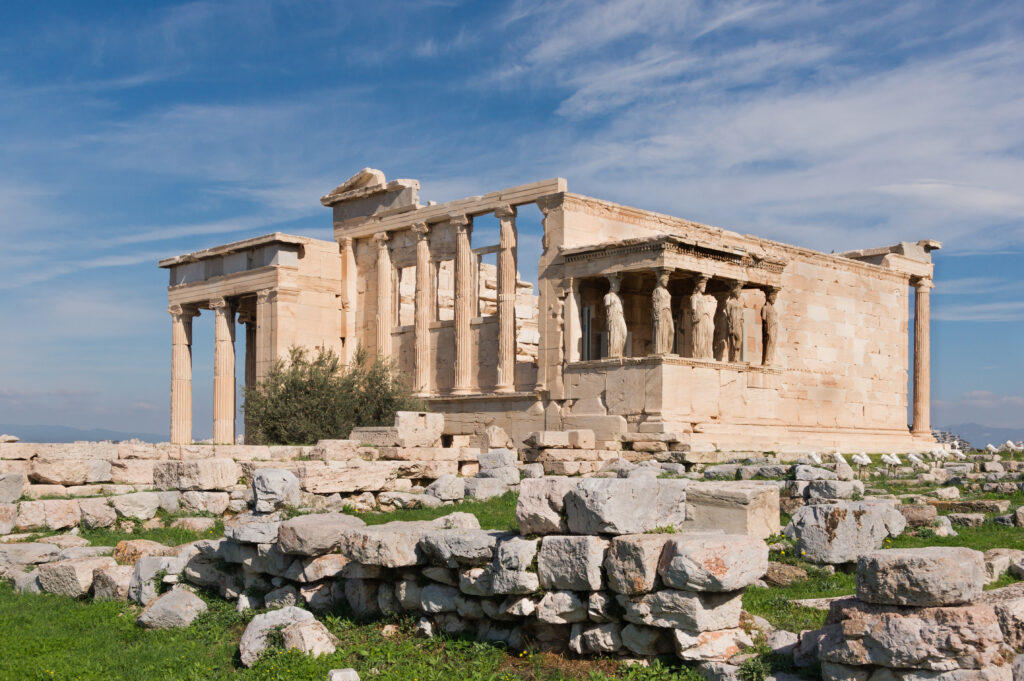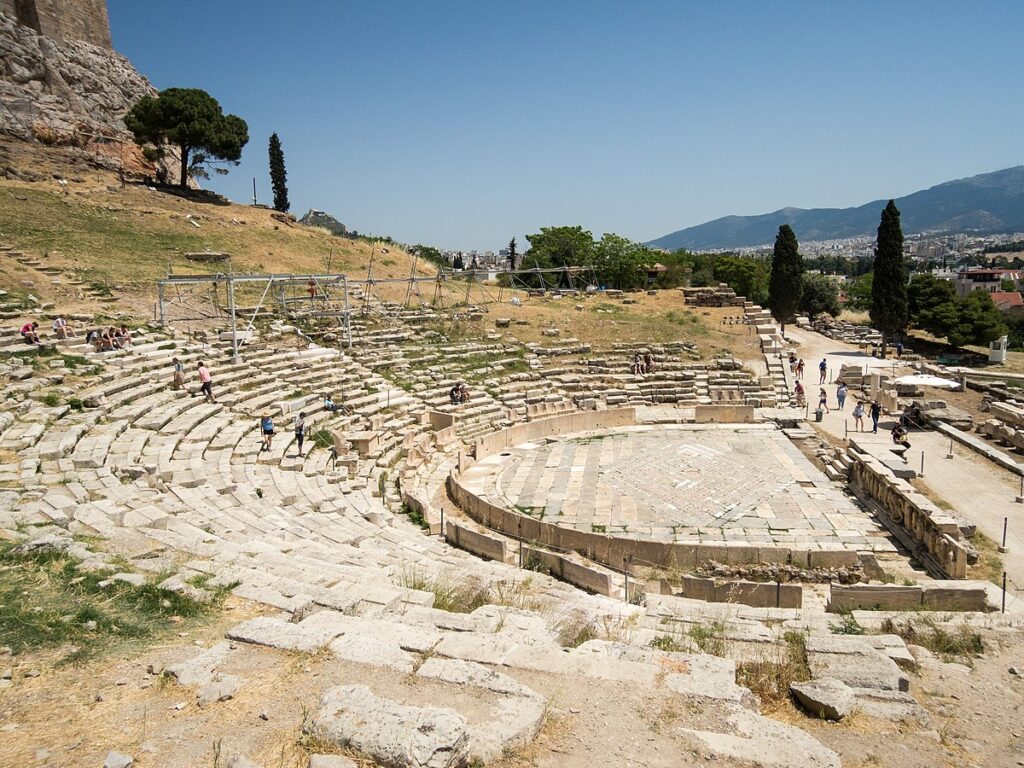Acropolis
An ancient city
The Acropolis of Athens is an iconic building and a representative structure of ancient Greek civilization located in the city of Athens, Greece. Built in the 5th century BCE, it is situated on a small hill in the center of Athens. During ancient Greek times, the Acropolis of Athens served as the political, cultural, and religious center of the city and was also a symbol of ancient Greek democracy. The Acropolis is comprised of several buildings, with the most famous being the Parthenon, which is considered a masterpiece of ancient Greek architectural art and one of the most complete surviving examples of ancient Greek architecture.
The Acropolis of Athens was designated as a UNESCO World Heritage Site in 1987 to protect and inherit this valuable cultural heritage of humanity. As one of the most popular tourist attractions in the world, it attracts thousands of visitors every year to explore and appreciate its historical, cultural, and artistic value. The Acropolis of Athens, as a world cultural heritage site, is an important legacy of human civilization and worth visiting to appreciate and explore.
Large-scale
Archaeological Sites

parthenon
The Parthenon is a temple located on the Acropolis of Athens, Greece. It was built in the 5th century BC as a dedication to Athena, who was considered the guardian deity of the city of Athens. The temple was designed by architects Ictinus and Callicrates, and built under the supervision of sculptor Phidias. The image on the right shows a comparison between a drawing of the temple in the 1780s and a recent photograph.
The Parthenon is a classic example of Doric architecture and is considered one of the greatest achievements of ancient Greek art and architecture. The temple was constructed using Pentelic marble and decorated with intricate sculptures and friezes, many of which depicted myths and legends of ancient Greece.Over the centuries, the Parthenon suffered damage and destruction due to wars, earthquakes, and looting. In the 19th century, Lord Elgin, the British ambassador to the Ottoman Empire, removed many of the sculptures and friezes and brought them to England, where they are now known as the Elgin Marbles.
Today, the Parthenon remains an iconic symbol of ancient Greek civilization, attracting millions of visitors each year. In recent years, extensive restoration work has been carried out to preserve and protect its cultural heritage for future generations.
Go to wikipedia : https:/en.wikipedia.org/wiki/Parthenon
Erechtheion

The Erechtheion is a masterpiece of ancient Greek architecture, located on the Acropolis of Athens, Greece, and built in the mid-5th century BCE. It was named after the Greek mythological hero Erechtheus, who was regarded as the protector of Athens. The temple housed multiple deities from ancient Greek mythology, including the goddess Athena, the god Poseidon, and another goddess.
Throughout history, the temple also served as a palace and government office until the Byzantine era. Constructed from limestone and marble, the Erechtheion is an elegant and magnificent example of ancient Greek architecture with typical features of classicism. The most famous feature of the temple is the Caryatids, which are six female figures carved in marble supporting the roof of the temple, considered outstanding works of ancient Greek architectural art.
Propylaea

The Arcadia Gate is an elegant example of ancient Roman architecture, constructed from limestone and marble. It stands 13 meters tall and 18 meters wide, with three arches and two towers. The gate is adorned with sculptures and reliefs depicting Roman mythology and military scenes. Two tall stone statues flanking the entrance symbolize the protectors and guardians of the city.
The gate was built during the reign of the Roman Emperor Constantine the Great, and was an important entry point to Smyrna, one of the largest cities in the Roman province of Asia. It was strategically located on a major road that connected the Aegean Sea coast with the interior of Asia Minor, and played a significant role in the economic and political life of the region.The Arcadia Gate was built in a typical Roman architectural style, characterized by its imposing scale and ornate decoration. The gate’s towers and arches are decorated with intricate carvings and moldings, reflecting the influence of Greek and Roman classical art.
In addition to its historical and cultural significance, the Arcadia Gate also serves as a symbol of the enduring legacy of the Roman Empire in the eastern Mediterranean. Its impressive architecture and engineering are a testament to the skill and innovation of ancient Roman builders, and continue to inspire awe and admiration among visitors to this day.
Go to wikipedia:https://en.wikipedia.org/wiki/Propylaea
Theatre of Dionysus

The Theater of Dionysus is an ancient theater located on the Acropolis of Athens in ancient Greece. Built in the 6th century BCE, it is considered the world’s first theater. In ancient Greece, it was the main venue for celebrating the festival of Dionysus and later became the cultural center of Athens. The theater could accommodate about 15,000 people and was one of the largest theaters in ancient Athens.
The theater was originally constructed with wood and soil, but was later rebuilt with stone in the 4th century BCE. It had a semicircular seating area and a stage for the actors to perform. Many famous playwrights and actors performed here during ancient Greece, including Aeschylus, Sophocles, and Euripides. These works are considered the foundation of Western drama and have had a profound influence on world culture.
The Theater of Dionysus has been destroyed and rebuilt several times throughout history. During the Roman period, the theater was used as an arena for gladiatorial contests and other entertainment. It gradually declined and was forgotten in the Middle Ages. It was not until the 19th century that archaeologists rediscovered and restored the theater, making it a cultural heritage site and an important tourist attraction.
Go to wikipedia: https://en.wikipedia.org/wiki/Theatre_of_Dionysus
History of Acropolis
Threats posed by
climate change
The Acropolis, one of the key symbols of human civilisation, has always been affected by climate change. In recent years, a series of extreme weather events caused by climate change have caused a number of problems for the area. The main problems are the increase in temperature due to global warming and changes in rainfall patterns. Excessive precipitation can bring problems such as flooding and landslides. Finally, rising sea levels are also an important influence on climate change.
How to visit in a sustainable way